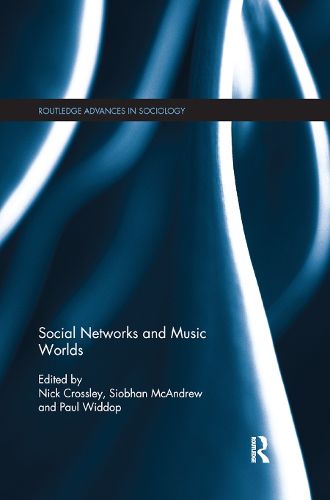Readings Newsletter
Become a Readings Member to make your shopping experience even easier.
Sign in or sign up for free!
You’re not far away from qualifying for FREE standard shipping within Australia
You’ve qualified for FREE standard shipping within Australia
The cart is loading…






Social networks are critical for the creation and consumption of music. This edited collection, Social Networks and Music Worlds, introduces students and scholars of music in society to the core concepts and tools of social network analysis. The collection showcases the use of these tools by sociologists, historians and musicologists, examining a variety of distinct ‘music worlds’, including post-punk, jazz, rap, folk, classical music, Ladyfest and the world of ‘open mic’ performances, on a number of different scales (local, national and international). In addition to their overarching Introduction, the editors offer a very clear and detailed introduction to the methodology of social network analysis for the uninitiated.
The collection builds upon insights from canonic texts in the sociology of music, with the crucial innovation of examining musical network interaction via formal methods. With network analysis in the arts and humanities at an emergent stage, Social Networks and Music Worlds highlights its possibilities for non-scientists. Contributions hail from leading and emerging scholars who present social network graphs and data to represent different music worlds, locating individuals, resources and styles within them.
The collection sits at the nexus of sociological, musicological and cultural studies traditions. Its range should ensure a large scholarly readership.
$9.00 standard shipping within Australia
FREE standard shipping within Australia for orders over $100.00
Express & International shipping calculated at checkout
Social networks are critical for the creation and consumption of music. This edited collection, Social Networks and Music Worlds, introduces students and scholars of music in society to the core concepts and tools of social network analysis. The collection showcases the use of these tools by sociologists, historians and musicologists, examining a variety of distinct ‘music worlds’, including post-punk, jazz, rap, folk, classical music, Ladyfest and the world of ‘open mic’ performances, on a number of different scales (local, national and international). In addition to their overarching Introduction, the editors offer a very clear and detailed introduction to the methodology of social network analysis for the uninitiated.
The collection builds upon insights from canonic texts in the sociology of music, with the crucial innovation of examining musical network interaction via formal methods. With network analysis in the arts and humanities at an emergent stage, Social Networks and Music Worlds highlights its possibilities for non-scientists. Contributions hail from leading and emerging scholars who present social network graphs and data to represent different music worlds, locating individuals, resources and styles within them.
The collection sits at the nexus of sociological, musicological and cultural studies traditions. Its range should ensure a large scholarly readership.